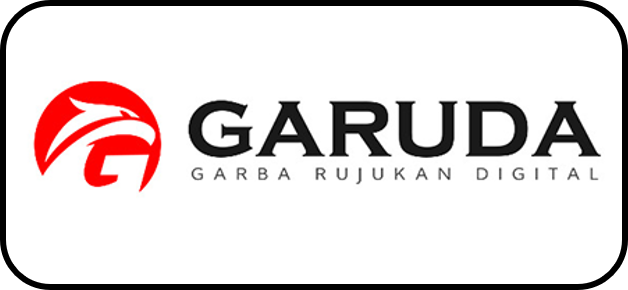Pengaruh Disiplin Kerja Terhadap Kinerja Pegawai Di Biro Pelayanan Sosial Dasar Sekretariat Daerah Provinsi Jawa Barat
Downloads
Bureau of Social Services in West Java Provinces has a fundamental duty organize formulation of general policy and coordination, reporting and evaluation of religion, education and culture, health and the environment. Employees have an important role in carrying out the task of the Bureau of Social Services. Implementation of discipline for employees has a function to improve employee performance. The Problems of this bureau is the declining performance of employees in 2015 due to lack of work discipline on Bureau of Social Services in West Java Regional. The effort to improve employee performance with these problems is suspected factors work discipline that has an influence on employee performance. Work discipline has a very high influence in the creation of employee performance Bureau of Social Services in West Java Regional, the value of R (correlation) produced is 0,745, it can be said that the discipline of work and employee performance are positively related 74.5% , While the coefficient of determination R2 (R Square) is 0.554, which means the ability to work discipline variable in influencing the performance of employees in the Bureau of Social Services in West Java Regional amounted to 55.4%, while 44.6% is the contribution of other factors which was not observed in this study. Employee performance (Y) can be explained by the discipline of work through regression Y = 0,646 + 0,849 X. This shows the influence of employee discipline (X) on employee performance (Y) is positive at 0,849, thus if the variable work discipline has increased 0,849 then the variable performance of employees will also increase number of 0,646.
Arikunto, Suharsimi. 2002. Prosedur Penelitian Suatu Pendekatan Praktek.Jakarta: PT. RINEKA CIPTA.
Azwar, S. 2009. Sikap Manusia, Teori dan Pengukurannya. Jakarta: PustakaPelajar
Amran. 2009. "Pengaruh Disiplin Kerja Terhadap Kinerja Pegawai kantor Departemen Sosial Kabupaten Gorontalo”. Dalam Jurnal Ichsan Gorontalo, Volume 4 No. 2. Hal 2397-2413. Gorontalo: Universitas Ichsan Gorontalo.
Fornell, C. dan Larcker, D.F. 1981. Evaluating Structural Equation Models with Unobservable Variables and Measurement Error. Journal of Marketing Research, 18, 39–50
Ghozali, Imam. 2009. Aplikasi Analisis Multivariate Dengan Program SPSS, Edisi Keempat. Semarang: Penerbit Universitas Diponegoro.
Ghozali, Imam. Aplikasi Analisis Multivariate dengan Program SPSS.c Semarang : Badan Penerbit UNDIP, 2006.
Ghozali, Imam. 2011. Aplikasi Analisis Multivariate dengan Program IBM SPSS19. Semarang: Universitas Diponegoro.
George, J, & Jones, G. 2002. Organizational Behavior (3rd ed). USA: Prentice-Hall.
Gruenberg, B. 1980. The Happy Worker: An Analisys of Educational and Occupational Difference in Determinants of Job Satisfaction. American Journal of Sociology. 85. 247-271.
Hardiyanto, Yudi, dkk 2003."Perancangan dan Pembuatan Sistem Informasi Pengukuran Kinerja Pemasaran dengan Metode Balanced Scorecard Studi Kasus PT. Semen Gresik”. Jurnal
Hasibuan, Malayu. 2004. Manajemen Sumber Daya Manusia. Jakarta: PT BumiAksara.
Kreitner R, & kinicki, A. 2001. Organizational Behavior. Fith Edition, International Edition, Mc graw-Hill Companies, Inc.
Kuncoro, Mudrajad. 2003. Metode Riset untuk Bisnis dan Ekonomi. Jakarta: Erlangga.
Logahan, Jerry Marcellinus. 2009. "Pengaruh Lingkungan Kerja dan Stres Pekerjaan Terhadap Kinerja Pekerja di PT Nemanac Rendem”. Tarakanita.
Mangkunegara, Anwar Prabu. 2004. Manajemen Sumber Daya Manusia Perusahaan. Bandung: PT Remaja Rosdakarya.
Mathis, R dan Jackson, W. 2006. Human Resources Development (Track MBAseries/terjemahan). Jakarta; Prestasi Pustaka
Meta, Nandha. 2013. Pengaruh Disiplin Kerja dan Kepemimpinan Terhadap Kinerja Karyawan Pada PT. Pustaka Rizki Putra Semarang. Tesis. Fakultas Ilmu Sosial dan Politik Universitas Diponegoro Semarang
Mudiartha Utama, Wayan. 2001. Manajemen Sumber Daya Manusia. Denpasar : UPT Penerbit Universitas Udayana
Nugroho, Agung Bhuono. Strategi Jitu Memilih Metode Statistika Penelitian DenganMenggunakan SPSS. Yogyakarta: CV. Andi Offset, 2005.
Pangarso, Astadi. Asri, Fara Dila Agitha. 2014. "Dominant Factor Affecting Marketing Employee Discipline In Publishing Company”. Proceeding. the 2014 International Conference in Organization Innovation (ICOI)
Prasetyo Utomo. 2008, Analisis Pengaruh Pemberdayaan dan Lingkungan Kerja Terhadap Kinerja Karyawan, Semarang : Fakultas Ekonomi Universitas Semarang.
Rahmatullah, Reska. 2003. "Analisis Pengaruh Budaya Organisasi, Kepuasan Kerja, Gaya Kepemimpinan Terhadap Kinerja Karyawan PT Penerbit Erlangga Cabang Palembang”.
Riduwan dan Sunarto. Pengantar Statistika Untuk Pendidikan, Sosial, Ekonomi, Komunikasi dan Bisnis (lengkap dengan aplikasi SPSS 14), Cet ke-1. Bandung: Alfabeta, Agustus 2007.
Riduwan, Dasar-dasar Statistika, Bandung: CV Alfabeta, 2008.
Rivai, Veithzal dan Basri. 2005. Performance Appraisal: Sistem Yang Tepat Untuk Menilai Kinerja Karyawan Dan Meningkatkan Daya Saing Perusahaan. Jakarta PT RAJA GRAFINDO PERSADA.
Robbins, Stephen P. 2006. Perilaku Organisasi. Edisi Kesepuluh. PT Indeks : Kelompok Gramedia.
Robert dan Steven J. Taylor. 1992. Pengantar Metoda Penelitian Kualitatif.
Surabaya: Usaha Nasional
Santosa, Purbayu Budi dan Ashari. 2005. Analisis Statistik dengan MicrosoftExcel dan SPSS. Yogyakarta: Penerbit Andi.
Setiyawan, Budi dan Waridin. 2006. Pengaruh Disiplin Kerja Karyawan Dan Budaya Organisasi Terhadap Kinerja Di Divisi Radiologi RSUP Dokter Kariadi Semarang. JRBI . Vol 2. No 2. Hal: 181-198.
Simamora Henry. 1997. Manajemen Sumber Daya Manusia. Cetakan kedua.Yogyakarta : STIE TKPN
Sugiyono. 2010. MetodePenelitian Kuantitatif Kualitatif & RND.Bandung:CV.ALFABETA
Suwanto,2011.Asas-Asas Manajemen Sumber Daya Manusia.Suci Press: Bandung
Sutrisno, Edy. 2010. Manajemen Sumber Daya Manusia. Jakarta: PT PrenadaMedia Group.
Umar, Husein. 2005, Metodologi Penelitian Untuk Skripsi dan Tesis Bisnis, Jakarta: PT. Gramedia Pustaka.
Authors who publish with this journal agree to the following terms:
1. The author(s) hold the copyright of the article without restrictions.
2. The author(s) retain publishing rights without restrictions
3. The legal formal aspect of journal publication accessibility refers to Creative Commons Attribution (CC BY).
















